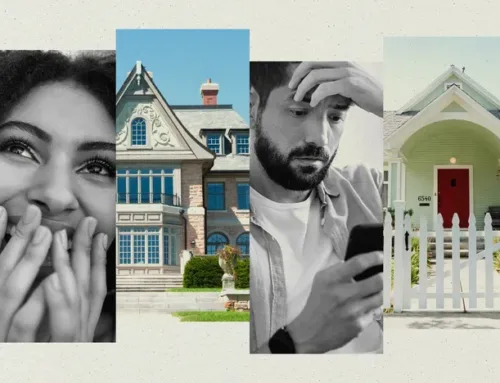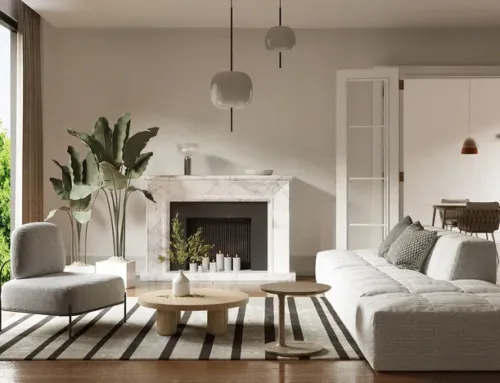Nov 7, 2022

Since home prices shot into the stratosphere, many first-time buyers have prayed for them to fall so that they could afford to become homeowners. Their wishes appear to have been granted—and yet, they’re caught in a paradox: Even as prices have begun to dip, the cost of purchasing a home has risen. A lot.
The reason for the contradiction: soaring mortgage interest rates.
Most folks are still laser-focused on a property’s price tag. In fact, this kind of list price obsession is deeply ingrained in the American psyche. But, of course, purchasing a home is very different from buying products from a brick-and-mortar store or shopping online. Unless home shoppers are buying with all cash, they will be taking out a long-term loan to fund their purchase. And there’s a hefty cost to borrow that money—which increases when mortgage rates go up.
Nationally, the median mortgage payment is now about 77% higher* than a year ago. The bulk of that increase is due to the higher rates, which shot up from the low 3% range to hover around 7% for 30-year fixed-rate loans. And that has entirely upended the affordability equation.
“Interest rates absolutely matter,” says Realtor.com® Senior Economist George Ratiu. “The mortgage rate can make or break someone’s ability to purchase a home almost regardless of price.”
For those payments to return to where they were just one year ago, home prices would need to plummet by 45% (assuming rates stay where they are). Let that sink in for a moment. If mortgage rates increased to 8%, prices would have to fall by about 50% to get back to around last year’s payment.
Mortgage rates make that much of a difference.
“Prices would have to drop significantly for homebuyers to feel like they’re actually getting a bargain,” says Ratiu. “If we had stayed at a roughly 3% interest rate, falling prices could have given people a chance to snag a bargain or something that’s actually more affordable. But with rates … not likely to return to those 3% levels anytime soon, even a 10% decline in prices is not going to offer much of a bargain.”
Home prices are not expected to plummet
The chances that home prices will fall by 45% are beyond slim. Prices have come down a little from their peaks over the spring and summer, but they are still up annually. Most real estate experts are predicting only about a 10% decline nationally, although the exact amount is expected to vary greatly throughout the country.
“It’s quite rare for house prices to actually fall. It doesn’t happen very often,” says Padhraic Garvey. He is the regional head of research, Americas, at the multination financial services and banking company ING.
During the Great Recession, home prices dropped only about 30% from their peak in the 2000s after the housing bubble burst. That was largely due to subprime, predatory loans going bust, a wave of foreclosures flooding the market with cheap residences, and more homes for sale than there were buyers.
Today, those risky mortgage loans have largely been eliminated. Only the most qualified buyers—those who are least likely to go into foreclosure—receive loans. And instead of a housing glut, there is a dire shortage of properties for rent and sale with many more buyers and renters than there are available homes. That keeps a floor under prices, preventing them from falling too far.
“Those folks who say, ‘What goes up, must come down,’ I appreciate them wanting to think about the economic theory behind prices,” says Lisa Sturtevant, chief economist of the Bright MLS, a multiple listing service covering the mid-Atlantic region. “But supply has to increase significantly if we’re expecting a big drop in prices, [and] we simply haven’t been building enough housing for years and years.”
Low rates helped to fuel the historic run-up in home prices during the COVID-19 pandemic. Because buyers were spending less each month on mortgage interest, they had more money to put toward homes. That precipitated the real estate frenzy that resulted in frenetic bidding wars, investors buying just about everything in sight, and six-figure offers over the asking price.
Now that rates have risen, bumping up how much today’s new homeowners must part with each month, buyers don’t have as much money to spend on the actual house. Their money is going to the lender instead. So prices have been forced to come down a little.
“I expect to see prices falling from their peaks. But in most markets, prices are [still] going to be 10%, 20%, 30% higher than they were in 2019 before the pandemic,” says Sturtevant. ”
Monthly mortgage payments have soared in the past year
Last October, the median mortgage payment was $1,245.48 a month nationally. A year later, buyers were shelling out about $1,000 more a month—for the same property, not including taxes or insurance costs. However, home prices were up only 13.3% year over year in October. So that means most of that additional cash they were spending came from higher rates
Over the life of a 30-year loan, buyers would be paying $345,247.20 more than they would have if they’d closed a year earlier. This assumes they don’t refinance their loans if rates go down, of course.
“That’s a lot of money,” says Sturtevant. “It’s a major impact on households budgets.”
Mortgage rates could keep rising
Mortgage rates have a decent chance of continuing their upward climb—much to the dismay of homebuyers.
The U.S. Federal Reserve has been hiking its own rates as a way to curb inflation. Mortgage rates, which are separate, typically follow in the Fed’s footsteps, rising when the Fed’s rates go up, and falling when the Fed cuts its rates.
The Fed typically lowers rates only to give the economy a boost when it needs one, which is what happened during the pandemic.
“The only way I see mortgage rates stopping their upward trajectory is if the economy dives into a severe recession,” says Ratiu.
* This calculation looks at October 2022 and 2021 median home list prices from Realtor.com and weekly average mortgage interest rates for 30-year fixed-rate loans in the last week of October using Freddie Mac data. Taxes and insurance costs were not included.
Source- https://www.realtor.com/news/trends/home-prices-would-need-to-fall-this-much-for-buyers-to-get-a-break/






